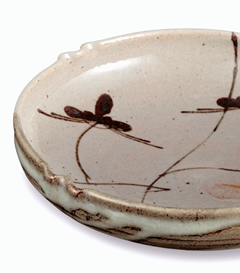KARATSU Yaki (Pottery)

Although disputed, it is likely that Karatsu Yaki was being made in the Karatsu area even before the 1592 campaigns to Korea. The name is abbreviated from wares made in the area of Matsu-ura the location of a number of kilns producing Taku kokaratsu, Hirado kokaratsu, and Takeo kokaratsu. However, the wares from the Matsuura kokaratsu kiln finally gave their name to this particular style of pottery.
The natural, earthy look of these wares gives them an appealing intimacy. The hand-drawn motifs have a natural warmth and the pieces for tea ceremony are particularly well known. Today, teacups, teapots, flower vases and sake flasks still fill Karatsu Yaki kilns.
Feature
Karatsu Yaki’s charm lies in its use of soil and simplicity, including rustic patterns that convey the warmth of the soil. The pottery is especially famous for use in tea ceremony.
How to make
Karatsu Yaki techniques include wheel throwing, slab work, hand forming and casting. Carvings, brush marking, damascening, scraping and other methods are used for decoration. It is baked with at 1,300°C after gloss is applied.

